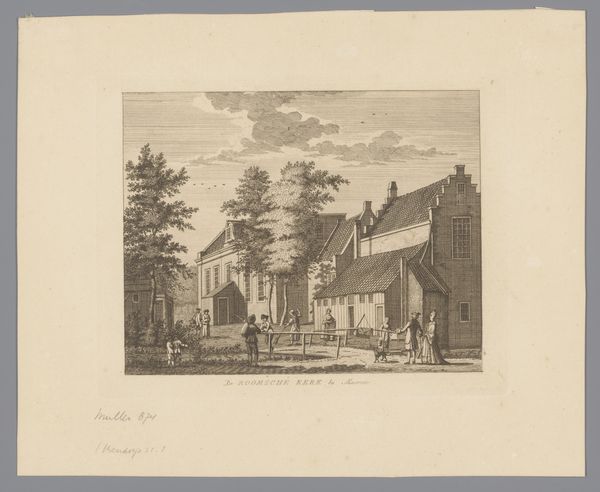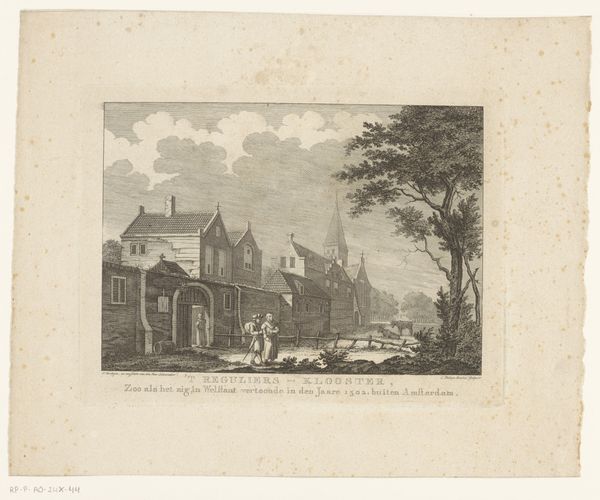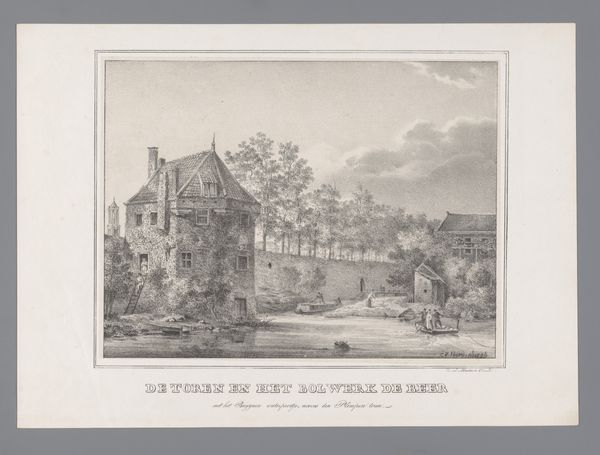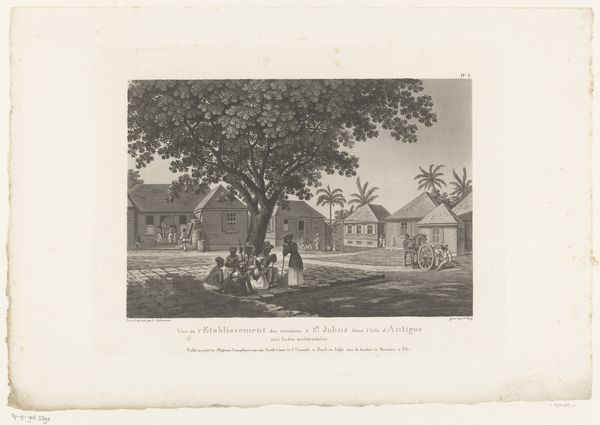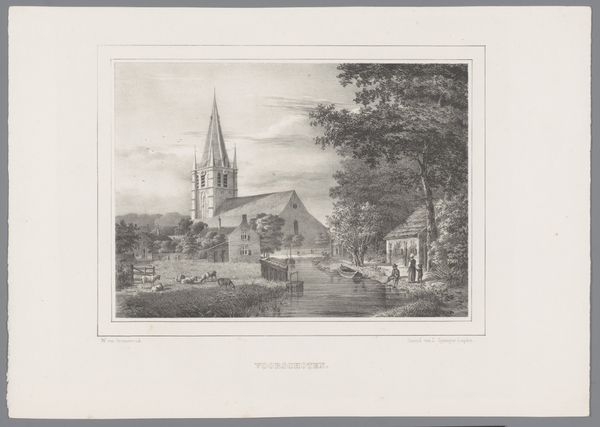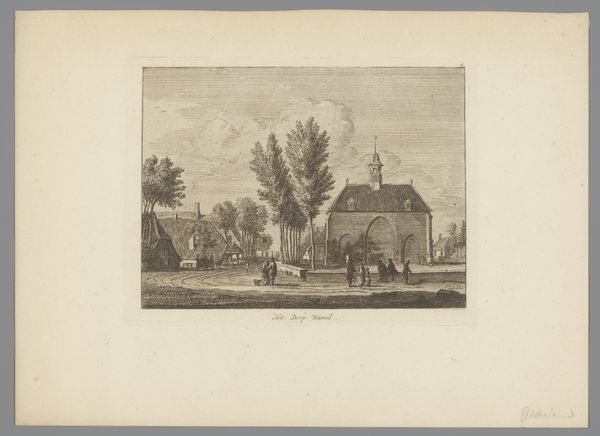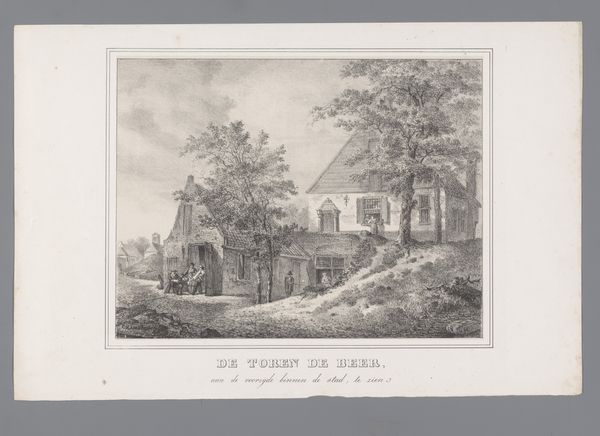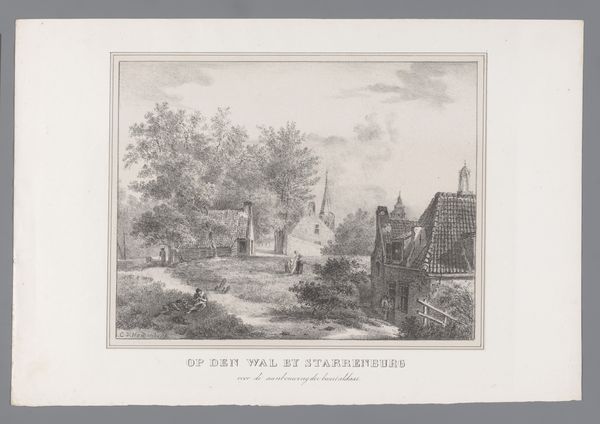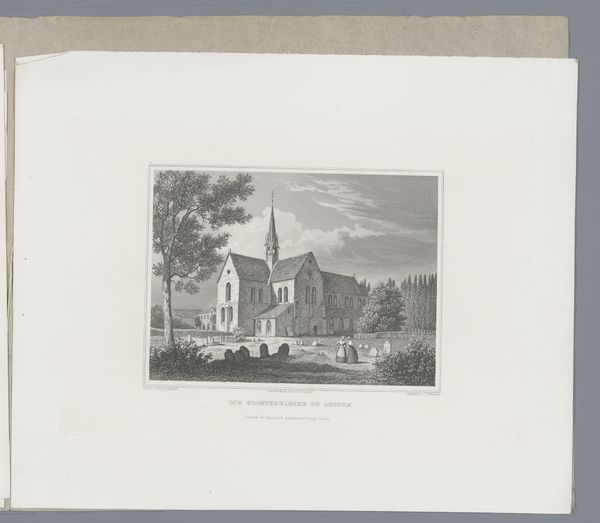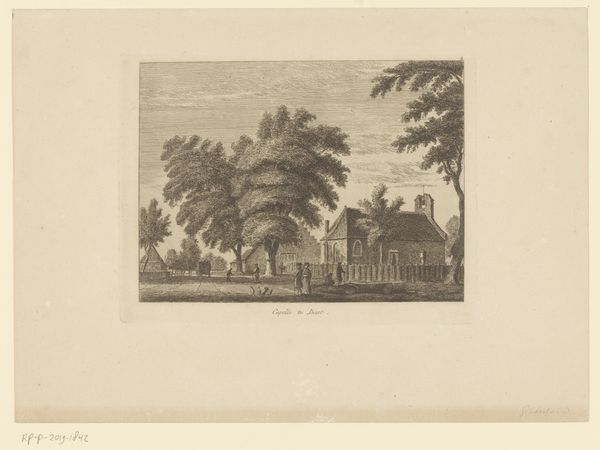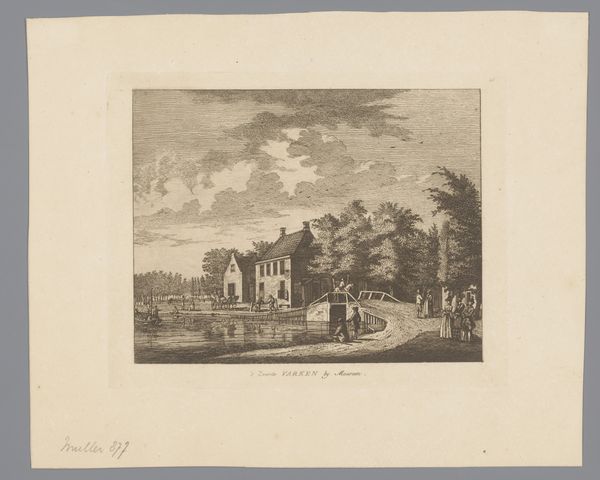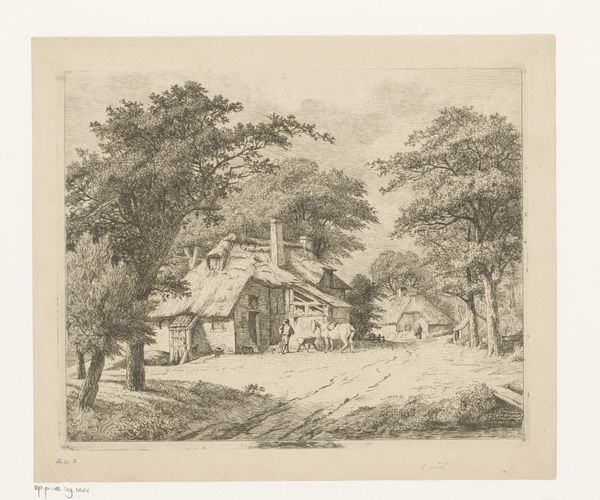
drawing, paper, pen
#
drawing
#
landscape
#
paper
#
romanticism
#
line
#
pen
#
cityscape
#
realism
Dimensions: height 265 mm, width 341 mm
Copyright: Rijks Museum: Open Domain
Curator: What a remarkably serene scene. This drawing is called "Bolwerk Zonnenburg in Utrecht," and it’s believed to have been created by Cornelis van Hardenbergh sometime between 1809 and 1843. Editor: It feels very still, doesn't it? Almost dreamlike, even though the lines are so precisely rendered. There's a wistful quality, a sense of bygone days caught in a fleeting moment. It almost aches with nostalgia. Curator: Van Hardenbergh used pen and paper to create this cityscape. He worked during a period when art became increasingly associated with national identity. I always wonder about the extent to which this played into how and why an artist like Hardenbergh chose to document urban spaces. Editor: That's fascinating. And, considering the romantic spirit brewing during that era, how that focus on place would tie into feeling… I'm drawn to the way the light filters through the trees, softening the architecture. Is this an exercise in pure architectural drawing, or something more emotional? The inclusion of figures almost incidentally… but of course, that cannot be accidental! Curator: I'd say that the everyday life he's capturing suggests a certain pride, and perhaps the desire to legitimize Utrecht’s everyday inhabitants alongside this architecture in a cultural landscape that was going through seismic changes. These sorts of drawings, for one, ended up in albums, and sometimes even framed on walls. How ordinary… and extraordinary! Editor: Indeed. Seeing figures lounging leisurely adds so much life to this otherwise staid architectural profile. Curator: Consider the artistic choices that shape our engagement, even now, centuries later, from museum walls. I wonder about the cultural institutions then that were taking root... Was van Hardenbergh thinking about posterity, or only patronage? Editor: It does give pause for thought. All those hands the piece passed through before we get to marvel over the final result. It's nice, really. What began as one person's view can create a sense of shared heritage and collective memory over time. I love the mystery and how something from so long ago feels so tangible and close. Curator: Ultimately, I agree. It’s quite powerful to realize the layered meaning that unfolds when art meets its public.
Comments
No comments
Be the first to comment and join the conversation on the ultimate creative platform.
